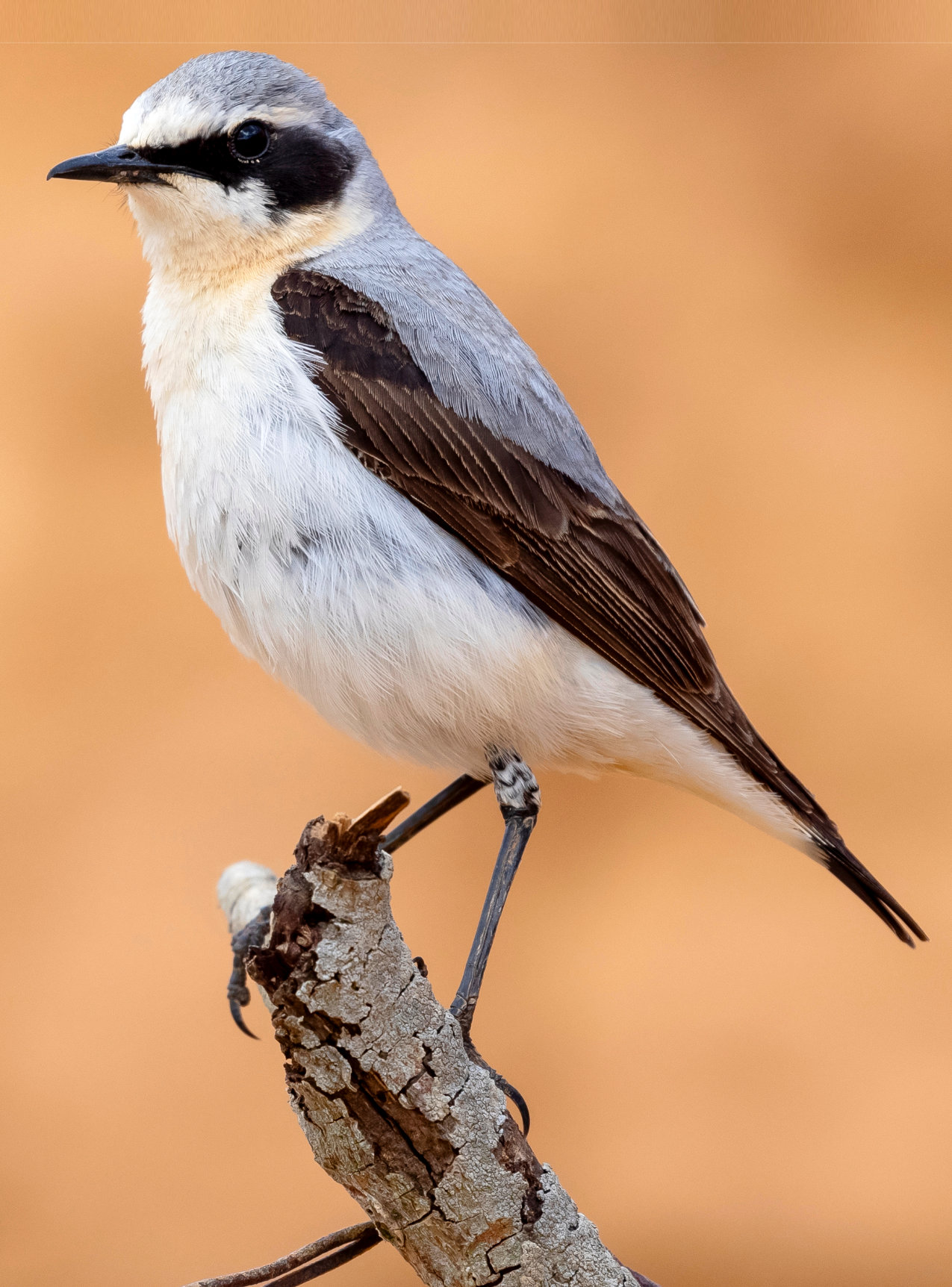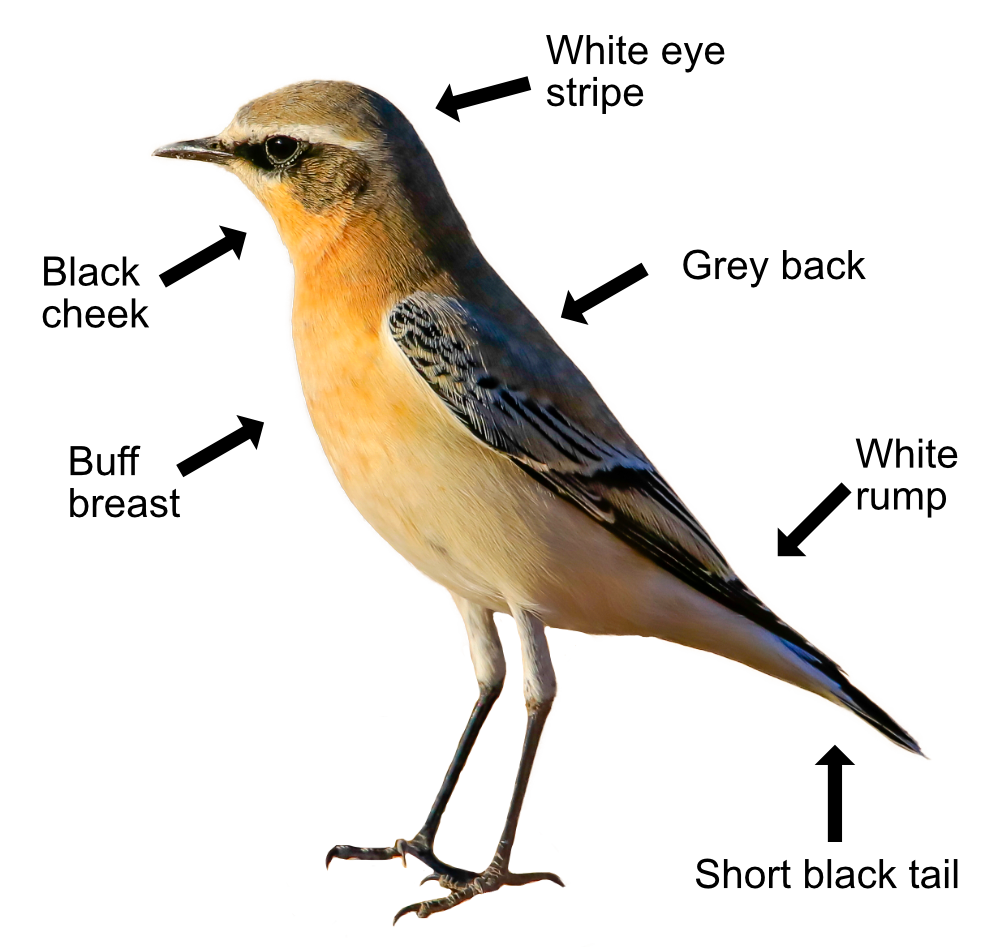
The Wheatear is a long distant migrant travelling from Africa to Europe, reaching as far as Greenland! A distance of 30,000 km. They arrive here in early spring and are usually seen in ones and twos. They are easy to spot from their distinctive quick scurry followed by stopping and standing to attention, often flicking their tails.
In summer, the bandit-masked male Wheatears have white rumps, short black tails, black cheeks, sandy breasts, blue-grey backs, white underparts, and a white stripe over their eye and forehead. In winter, they are less well marked. The female and juvenile are a washed out, buff brown version of the male Their white rump is visible against their black tail when flying. They sing a warbling song in short bursts, often given in fluttering song flights.

Wheatears feed mainly on insects, often jumping up to catch them. They will also eat worms, snails and berries.
Mum builds the rough cup of grass nest and lines it with moss. It is made within a hole or crevice in open countryside like a rocky mountain slope, moor or dune. An abandoned rabbit burrow, a hole in a wall or even a bit of drainage pipe will do. Dad perches nearby and sings to her. She lays 4-7 pale blue eggs which hatch after 13 days. The youngsters are fed by both mum and dad and can fly 15 days later, becoming fully independent after a further 15 days. They do their moult before heading back to Africa in October, many doing a 4,000km non-stop hop before resting in Morocco. Young Wheatears can breed after one year.
Sadly, Wheatear numbers have declined in the last fifty years and they are Amber listed. The drop is thought to be due to the ploughing of old grasslands and droughts in Africa. About 200,000 pairs come to Britain and can be found mainly in northern and western regions. The oldest ringed Wheatear lived to 7.
Their Latin name is 'oenanthe oenanthe' and is derived from the Greek 'oenos' for 'wine' and 'anthos' for 'flower', refering to their return to Greece in the spring just as the grapevines blossom. The English name Wheatear is not derived from 'wheat' or any sense of 'ear,' but is derived from the Anglo Saxon 'ear' for 'arse' and 'hwit' for 'white' because of its white rump. The name for an earwig comes from the same source and means 'wiggly arse'. Wheatears have many local nicknames which reflect their calls or behaviour. These include; 'chick-chack', 'fallow chat', 'coney chuck', 'stone chucker', 'white tail' and 'clod hopper'.
In the 18th and 19th centuries, Wheatears were considered a delicacy in England, called 'the English ortolan' and Sussex shepherds would supplement their income by selling birds they trapped.